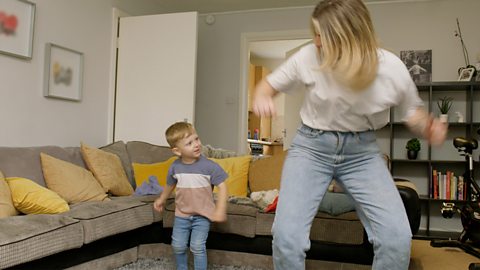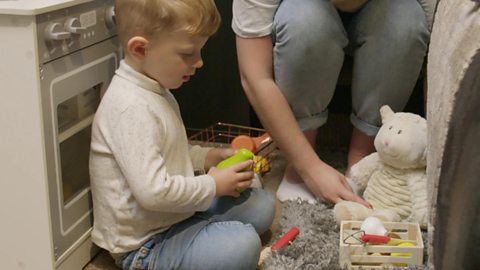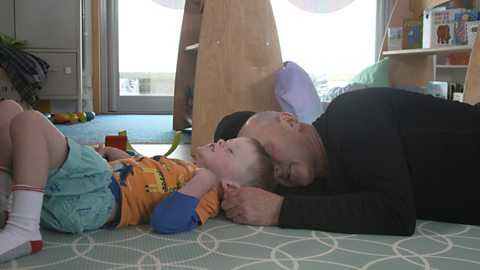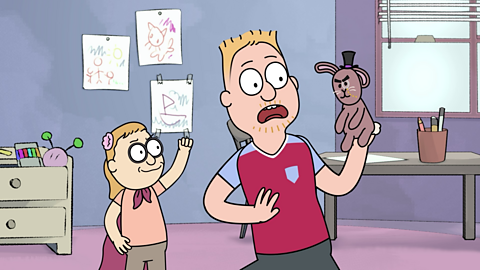Home > Activities > 3-4 years
Dance can be a great tool for children to use when exploring their emotions.
Children often do not have all the words to express how they are feeling but can sometimes express themselves better through movement and actions.
Recognising and discussing emotions is an extremely important part of their development because it can impact their behaviour and mental health.
When children struggle with their emotions this can impact on their concentration and listening, which can affect communication skills in turn.
In this activity, your child can dance out different emotions and link these dances to new words that might help them express themselves in the future.
Watch the video below to see how you can get involved and build up your child's confidence to talk about their feelings.
How are you feeling just now?
Happy!
Are you feeling happy? Can you do a dance that shows that you're feeling happy?
Like this!
What do you do when you're happy?
Spin around.
Spin around. Come on then, show me how you spin!
Wow!
What kind of dancing do you do when you're feeling a little bit sad?
Oooh… That's some good dance moves.
What makes Becca happy?
Playing with Harry. Playing with Harry. It makes me happy.
What kind of dance would you like to do next?
An angry dance!An angry dance?
What does an angry dance look like?
°Őłóľ±˛ő…
That's a good angry dance.
What if mum did this? What would you say mum was?
Angry.
Angry! Good girl.
Show mum what you do when you're angry.
You stomp!
Show me your stomping.
Let's see your angry faces.
Grrrr!
Let me see your funny faces.
[Laughs]
What's mum feeling now?
Excited!
How else do you sometimes feel?
Scared.
A scared dance. What does that look like?
That's a good dance.
Mummy cuddles me. And how do you feel?
Happy!
Happy, yeah.
What are the benefits of exploring emotion through dance?
- Using movement and music is a great way to start a conversation about feelings.
- It's an opportunity to introduce new words for different emotions they might not know yet.
- Identifying how different emotions might look or feel helps your child learn the words for how they are feeling.
- The more you explore emotions, the more confident your child will be expressing themselves.
- Having the words to express themselves can cause less frustration or negative behaviour in the future.

Top tips for using dance to explore emotions
Ask your child how they are feeling and see if they can move their body in a way that reflects this emotion. If you're feeling brave, you can join in too!
Don’t worry how you look - your children will enjoy moving and chatting with you.
Ask them to create a dance for more than one emotion. How are all their dances different? Ask them questions about these emotions, their dances and why people might feel a certain way.
Try letting your child lead the play and choosing emotions. They might find it easier to express their feelings if they feel in charge.
Being able to identify what emotion you are feeling, name it and express it is called emotional literacy.
This activity might come in handy next time they're having a tantrum or a meltdown. Sometimes when children's emotions are high, they can't find their words.
Asking them to show how they're feeling through dance and movement gives them another method to communicate with you.
You can also share how you are feeling and highlight what that does to your body. You can show these physical changes through your dance and talk about it too.
You could try saying, "I feel happy and that makes my tummy feel tingly."

Play ideas to encourage emotions
- Read stories that feature characters who are experiencing similar emotions to your child. Talk about these feelings as you share the story.
- Your child could act out feelings with puppets or toys or use old clothes for pretend play.
- Making faces helps children learn to express their moods with words and actions.
- Drawing faces and getting creative in other ways can help children express their emotions.






